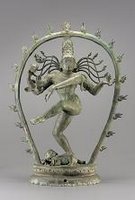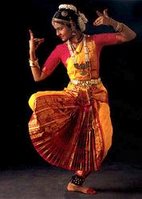 Throught the 2000 years of Christian history, worship dancing looses its importance up to gaining a pejorative sens around the Middle Ages. Many records exist of prohibitions by leaders within most branches of the Christian Church, for such reasons as the association of dance with paganism, fears relating to sexuality, and a Greek-influenced belief in the separation of soul and body.
Throught the 2000 years of Christian history, worship dancing looses its importance up to gaining a pejorative sens around the Middle Ages. Many records exist of prohibitions by leaders within most branches of the Christian Church, for such reasons as the association of dance with paganism, fears relating to sexuality, and a Greek-influenced belief in the separation of soul and body.In the first five centuries of the Christian church "dance was still acceptable because it was planted deep in the soil of the Judeo-Christian tradition". Christians were accustomed to celebrating, in dance, at worship and festivals because of the Hebrew tradition of dance.
The New Testament gives few direct references to dance. Paul reminds Christians that their bodies are temples of the Holy Spirit and that they should glorify God with their bodies (1 Corinthians 6:19-20).The biblical stance for most prayers included raising arms and hands above the head (1 Timothy 2:8).
In the two earliest Christian liturgies recorded in detail, dance is used in the order of service. In the early church, dance was perceived as one of the 'heavenly joys and part of the adoration of the divinity by the angels and by the saved'.
This attitude to dance contrasts sharply with Roman society in which Christianity first appeared. As Shawn comments, 'Here in Imperial Rome we find the dance first completely theatricalised - then commercialised; and as the religious life of Rome became orgiastic, so the religious dances became occasions for unbridled licentiousness and sensuality'. In reaction to what the Christians perceived as moral decadence, the church sought to purify the dance by expunging all traces of paganism from the intention and expression of the movement. Dance, however, continued within the church itself, provided the form and intent were holy and not profane. The purpose of liturgical movement was to bring glory and honour to God, and take the focus off the self.
Simultaneously in the Middle Ages, there were outbreaks of dance epidemics known as Danseomania - dance mania The dance epidemics reached an intensity that rendered ecclesiastical councils helpless in opposition to them. Despite the church's command to cease the dance manias, the people either wouldn't or couldn't. Consequently, the dancers were often accused of being possessed by the devil.
Leaders in the church began to voice their opposition to the use of dance. John Chrysostom (AD 345-407), in speaking of Herodias' daughter, commented that 'where dancing is, there is the evil one' (Gagne 1984:50). Augustine (AD 354-430), Bishop of Hippo, warned against 'frivolous or unseemly' dances (Adams 1990:20) and insisted on prayer, not dance. There were an increasing number of edicts and considerable legislation which reformed church liturgy, the use of dance was restricted. In the later Middle Ages church hierarchy issued a number of edicts against the use of dance.
The Reformation ideas were even more critic to dances. Christians were taught not to glorify the body.Those who cultivate it are generally idolaters, epicureans, good for nothings, despicable or dishonourable comedians or actors, as well as souteneurs, gigolos, and other dissolute, worthless, wanton persons.
Consequently, religious dance disappeared, or survived in only a few isolated places. Other Christian dance movements were changed into folk expressions, to be seen at weddings or funerals.
Today
Gradually, with the renewal of the church in the twentieth century, including liturgical renewal, dance
 has begun to find increasing acceptance in the worship life of the church once again. It has a rich and biblical tradition. Dance offers an enormous range of forms and expressions in worship from the carefully choreographed dramatic presentation to the spontaneous worship and celebration of indiviuals and congregations of all ages.
has begun to find increasing acceptance in the worship life of the church once again. It has a rich and biblical tradition. Dance offers an enormous range of forms and expressions in worship from the carefully choreographed dramatic presentation to the spontaneous worship and celebration of indiviuals and congregations of all ages.Sources : http://www.pastornet.net.au/renewal/journal6/coleman.html
Wikipédia : article on Worship dance









